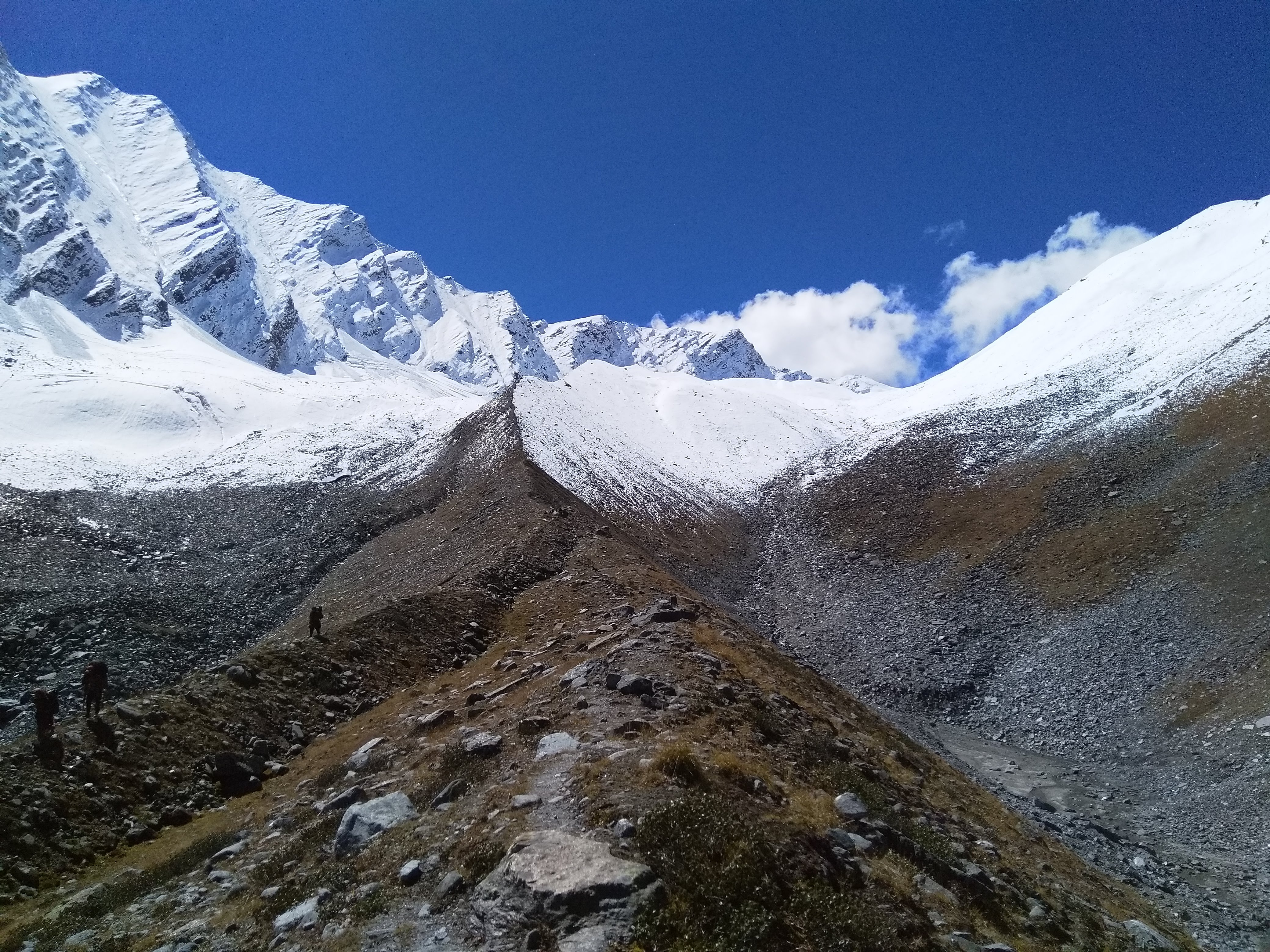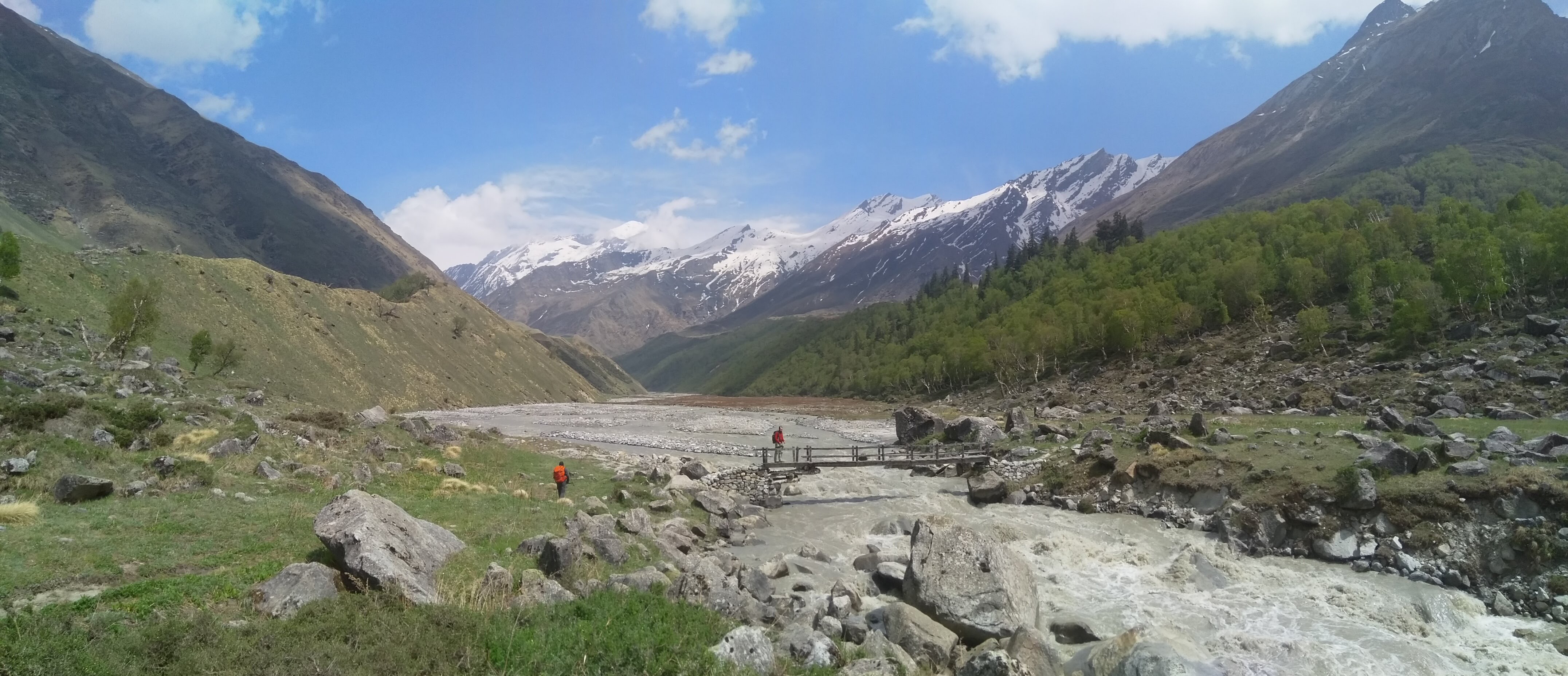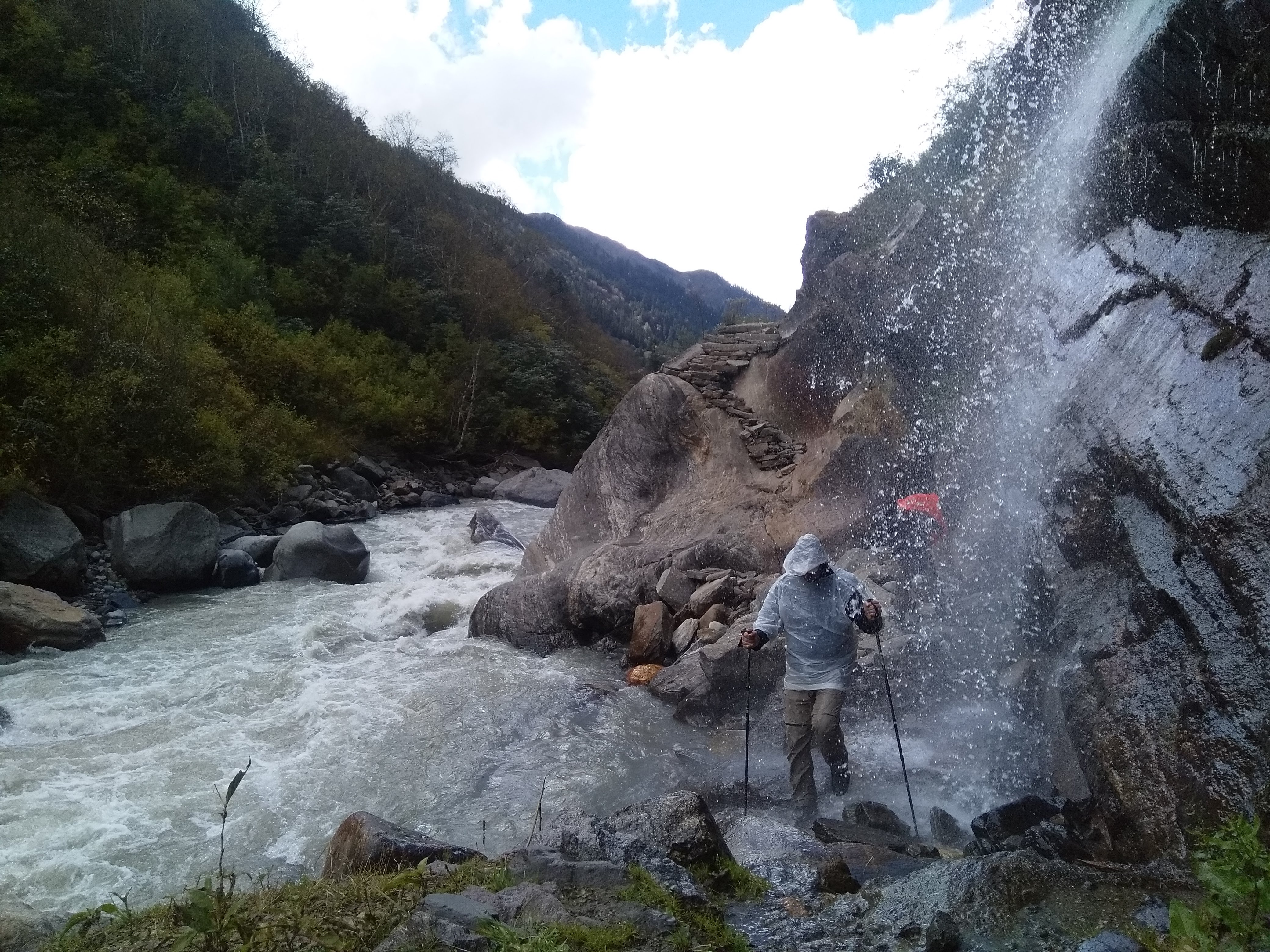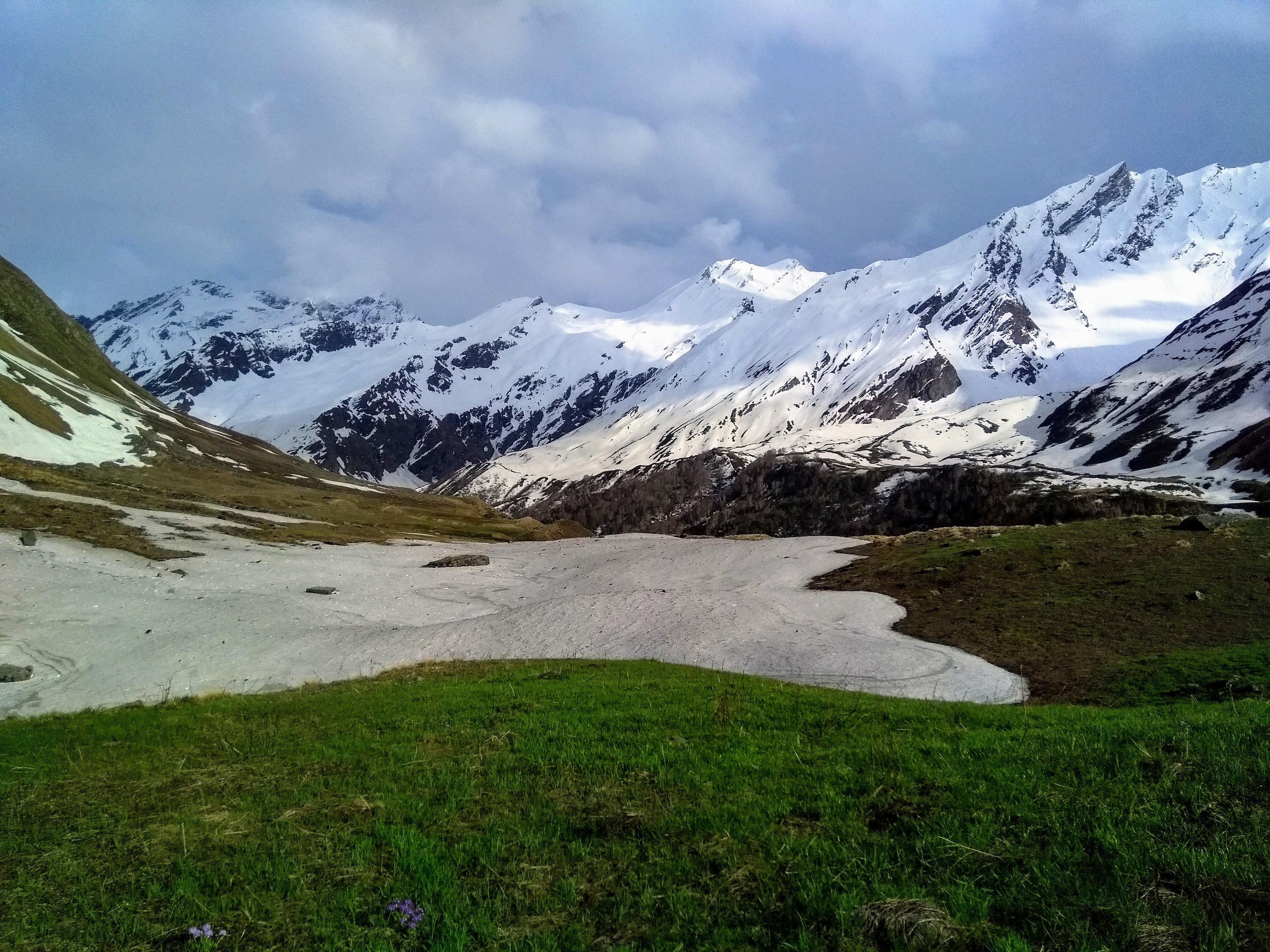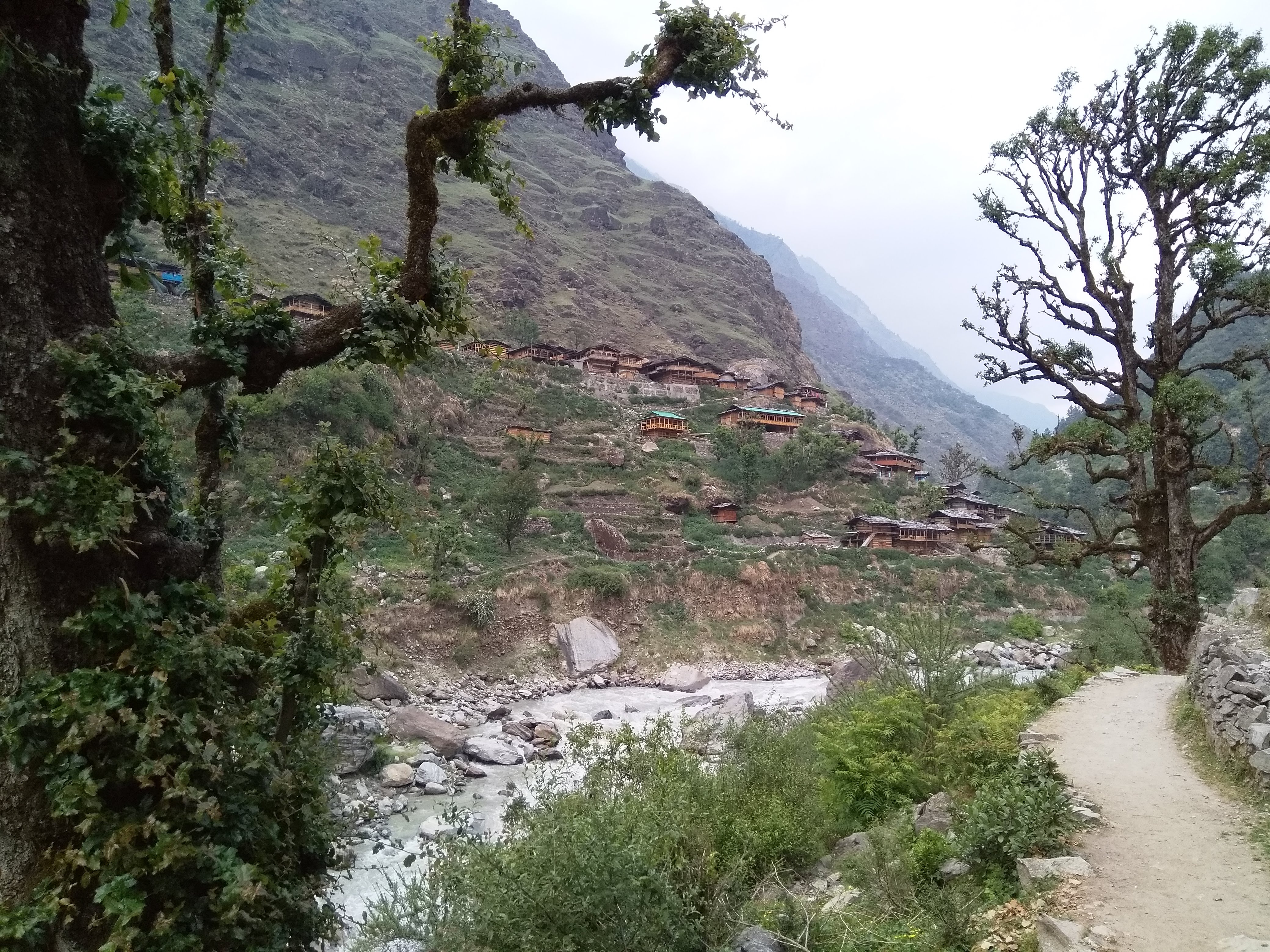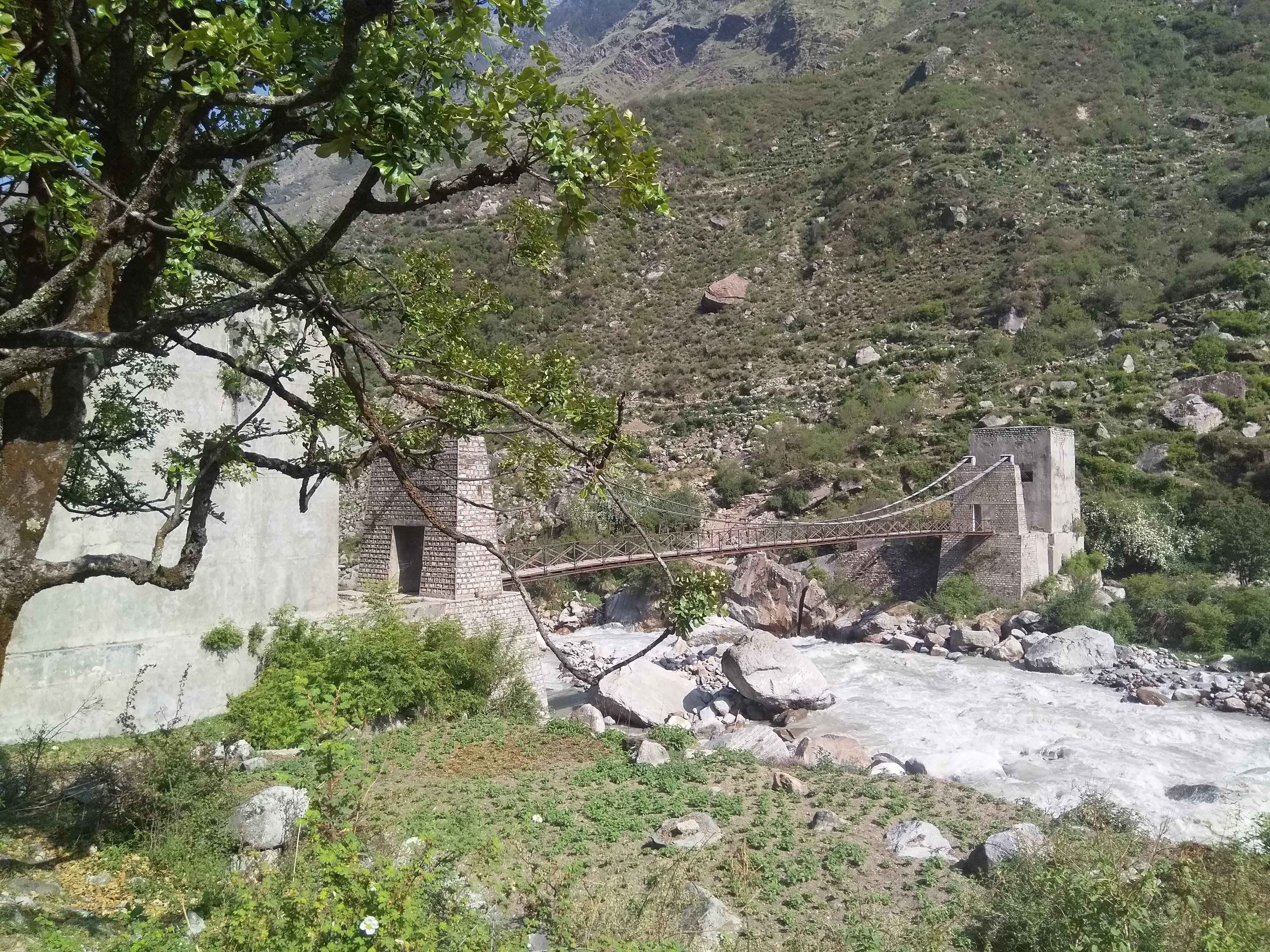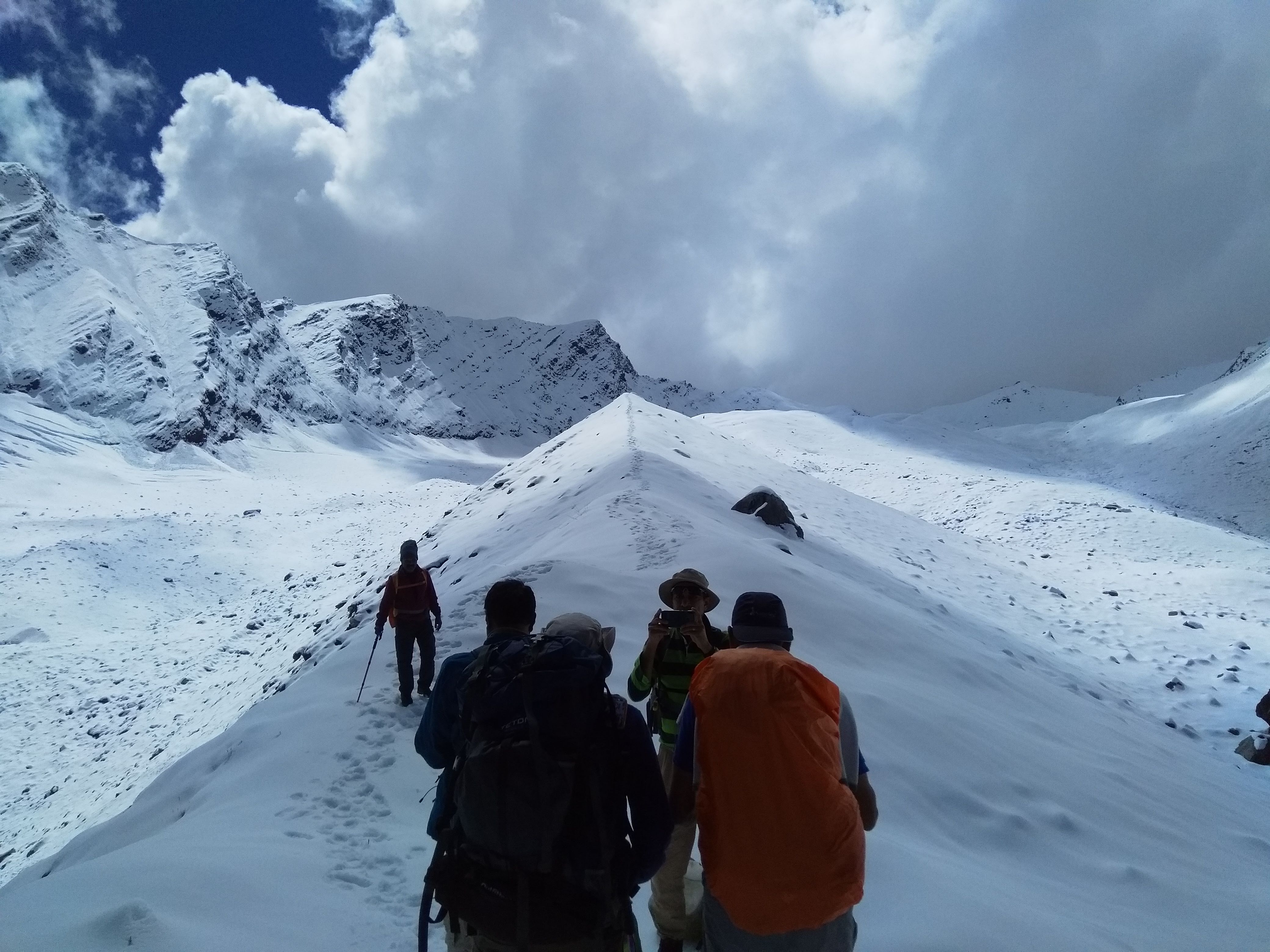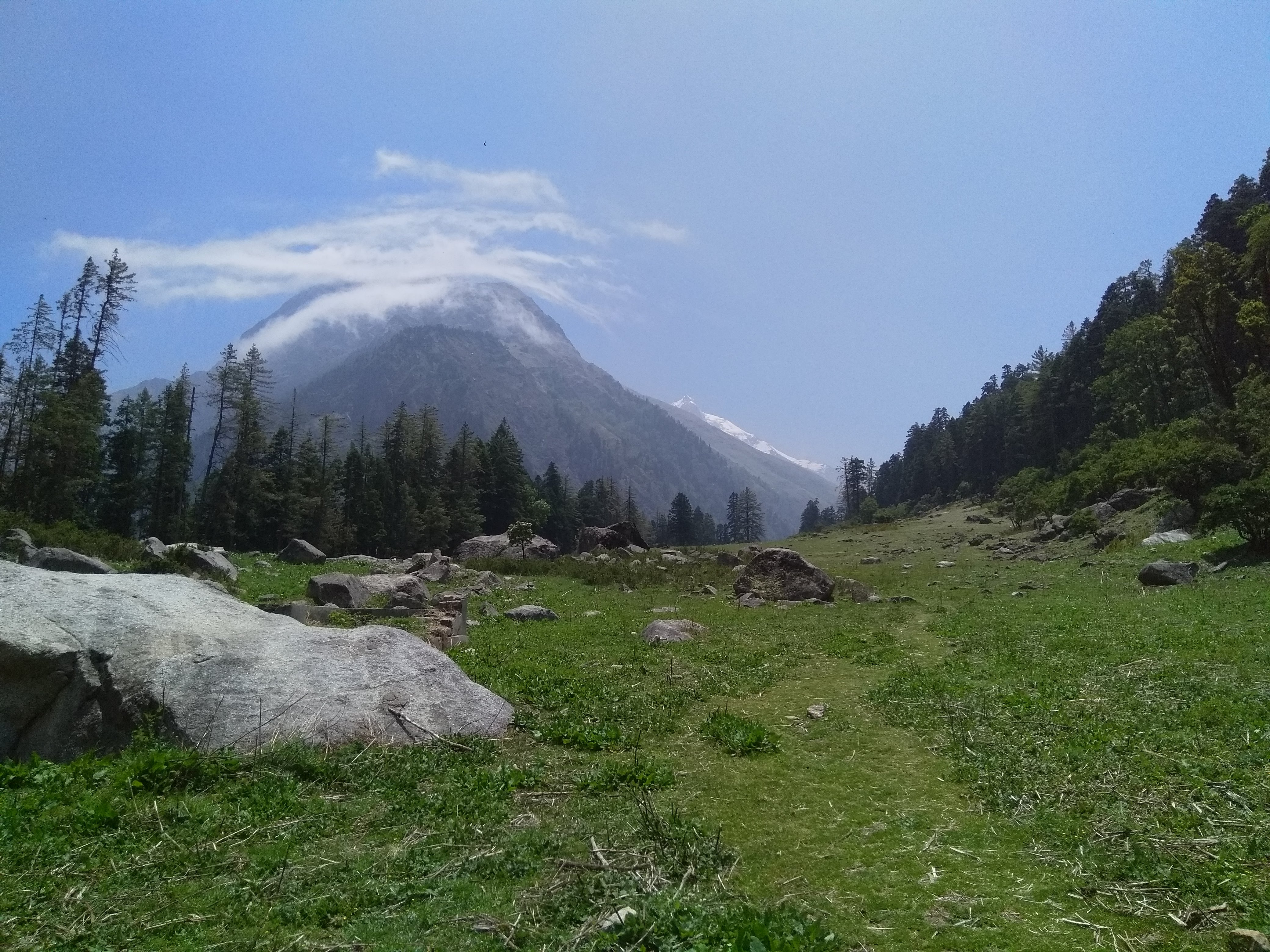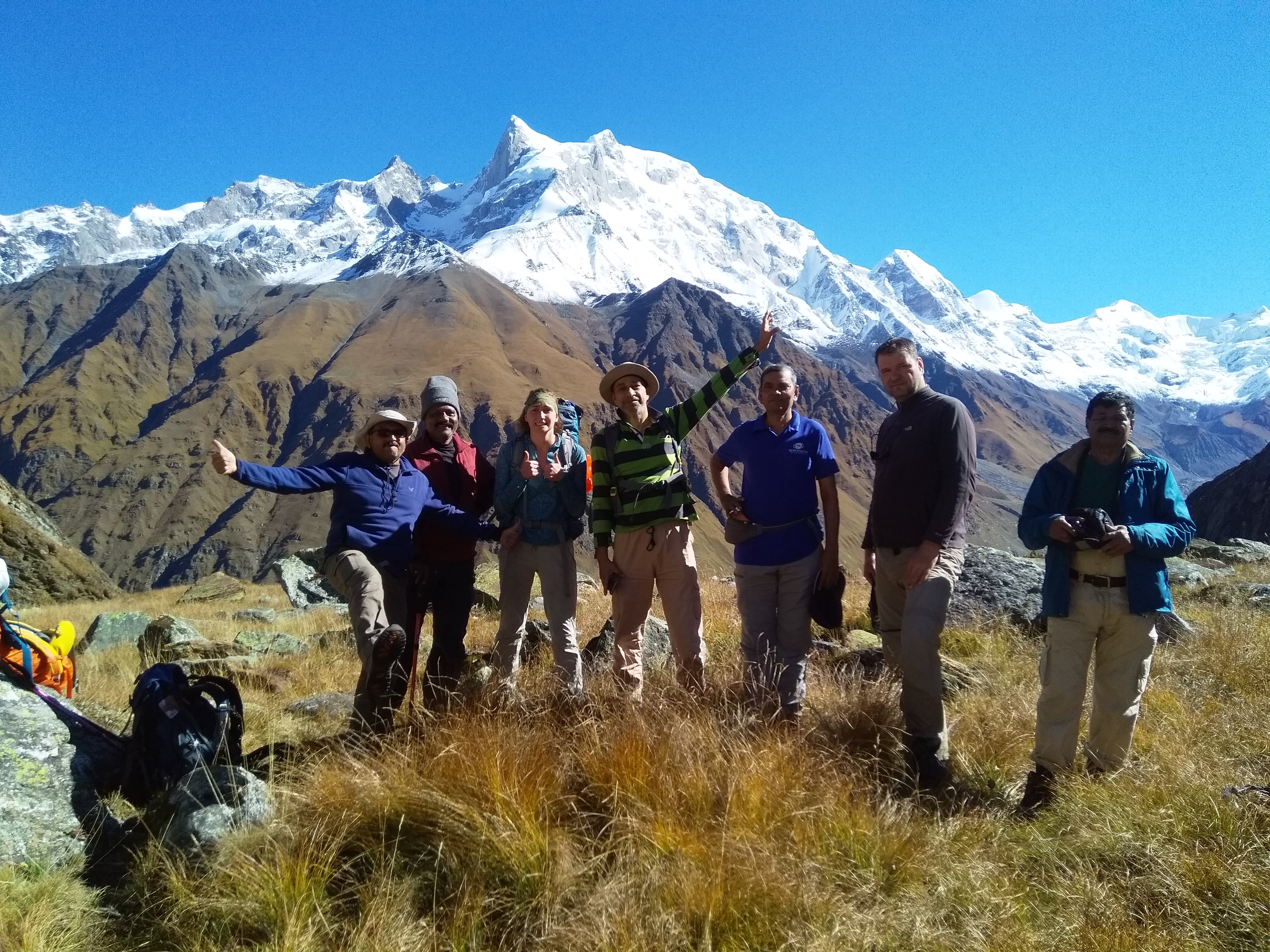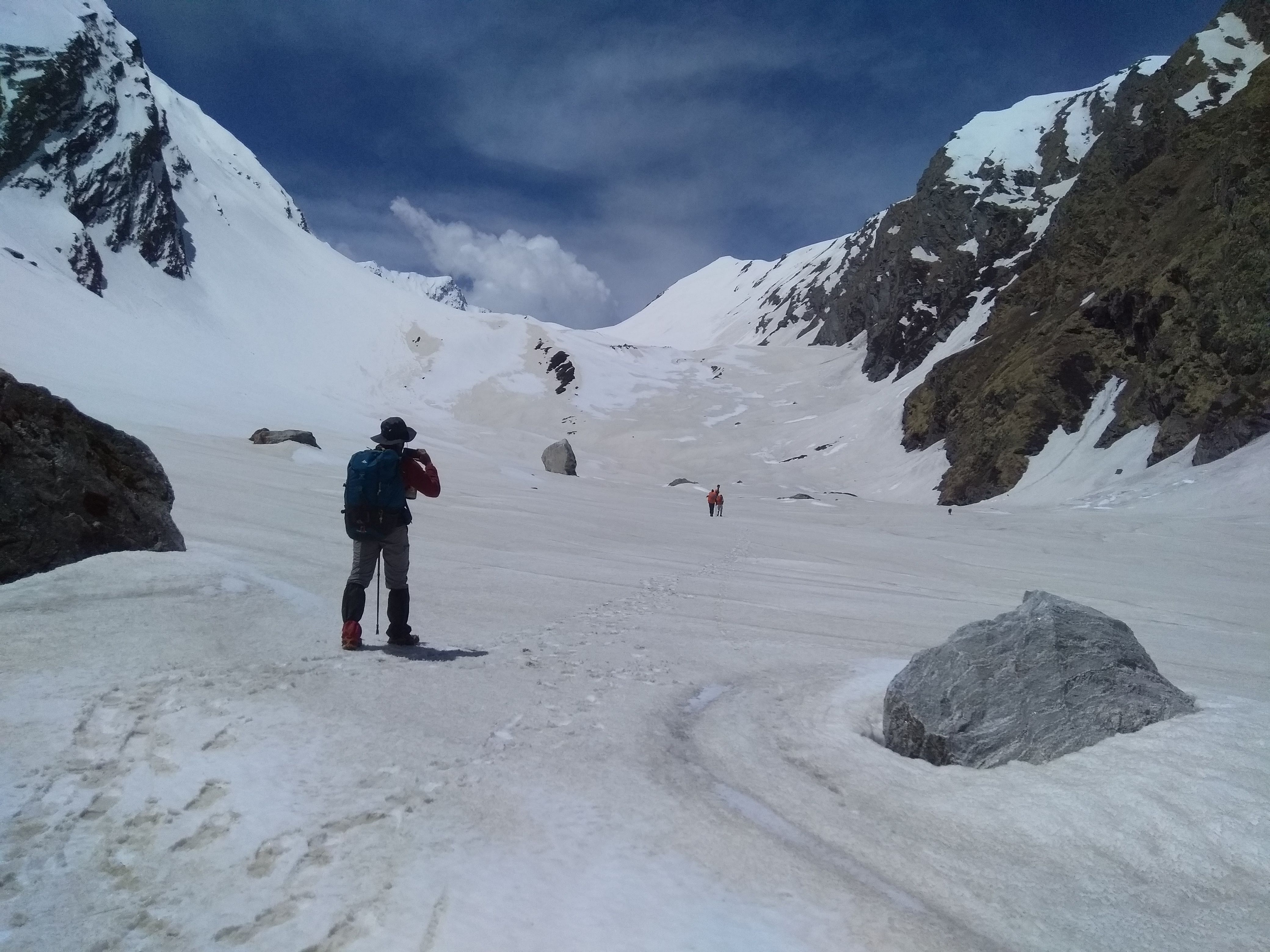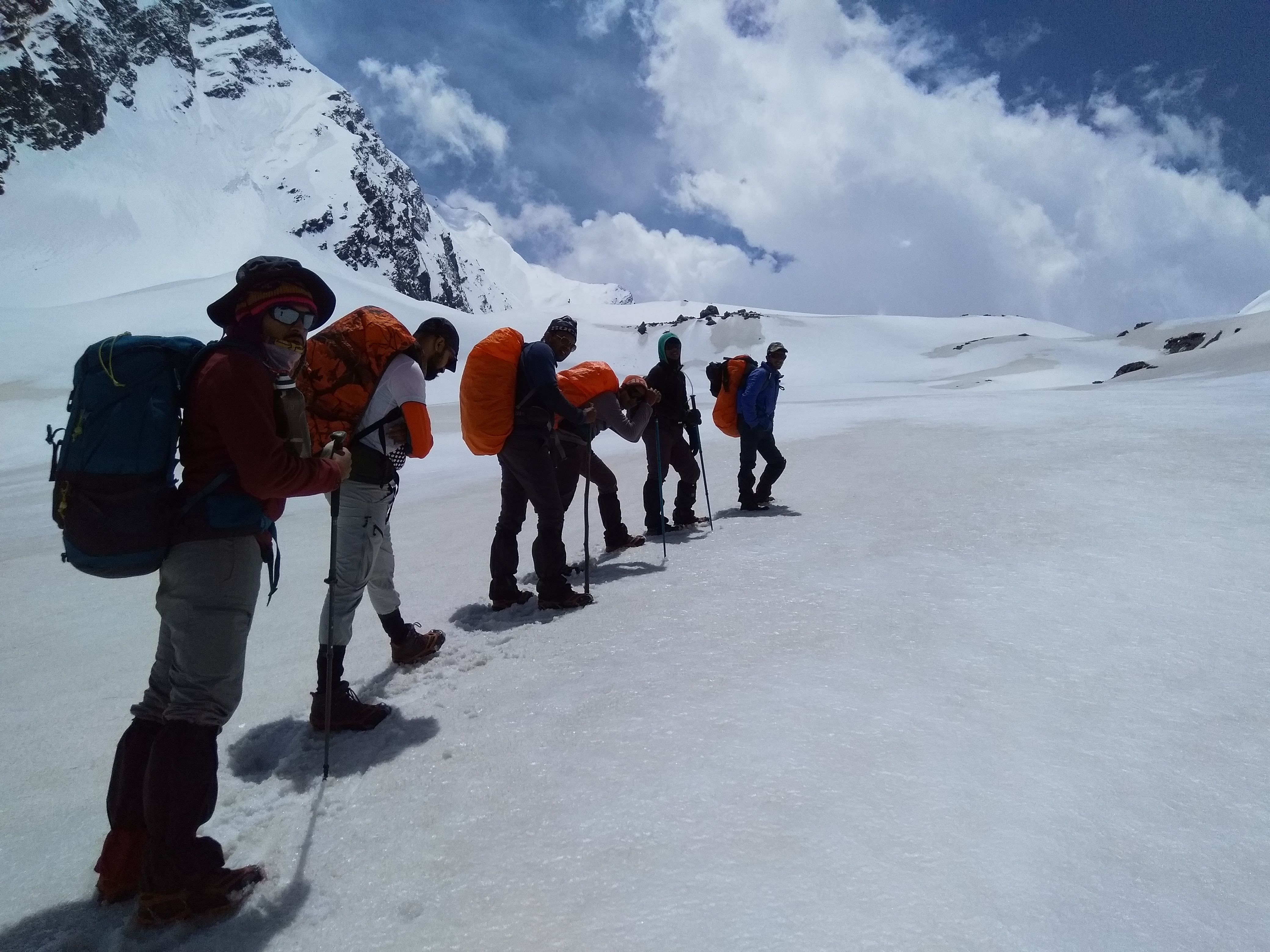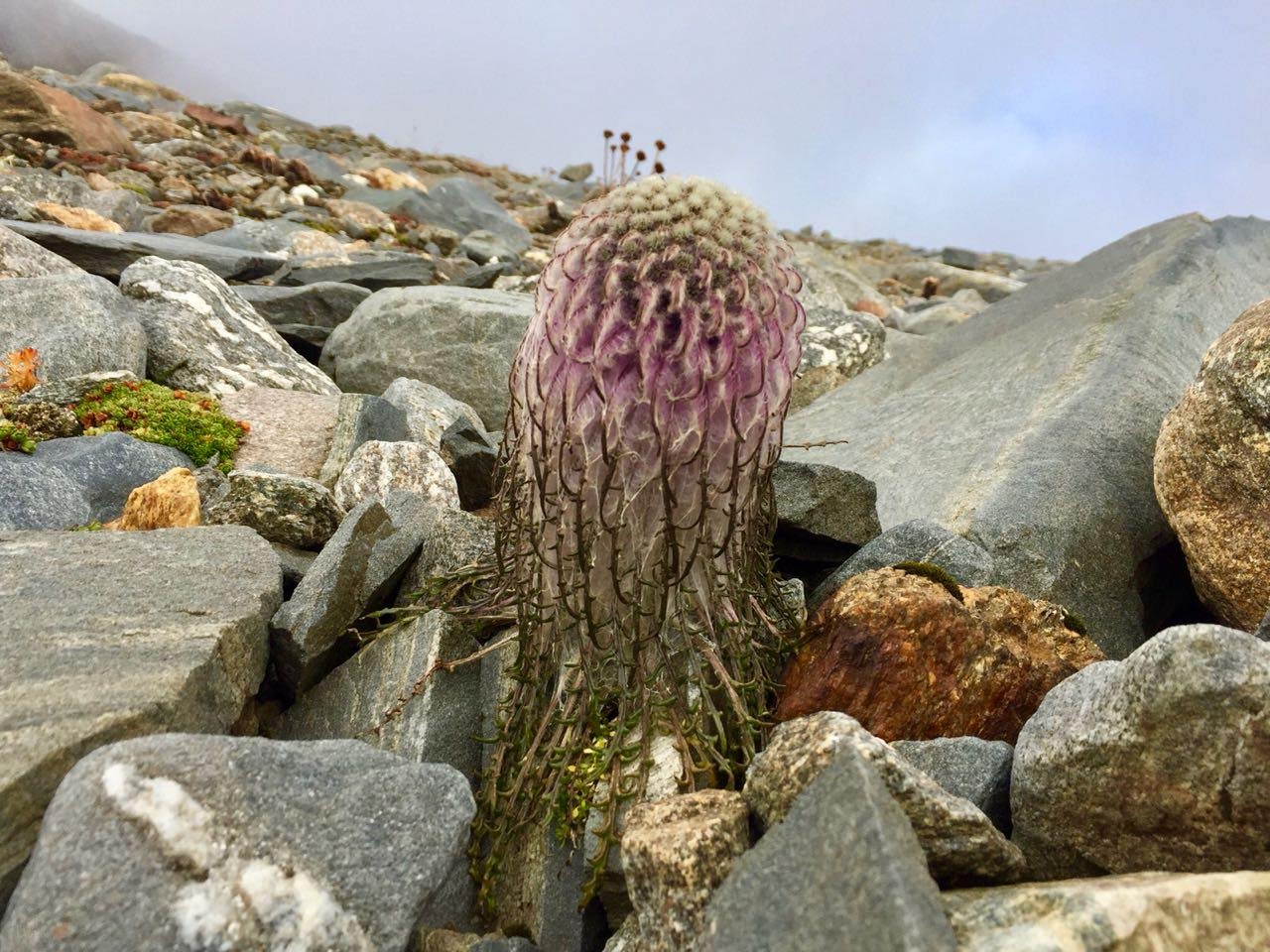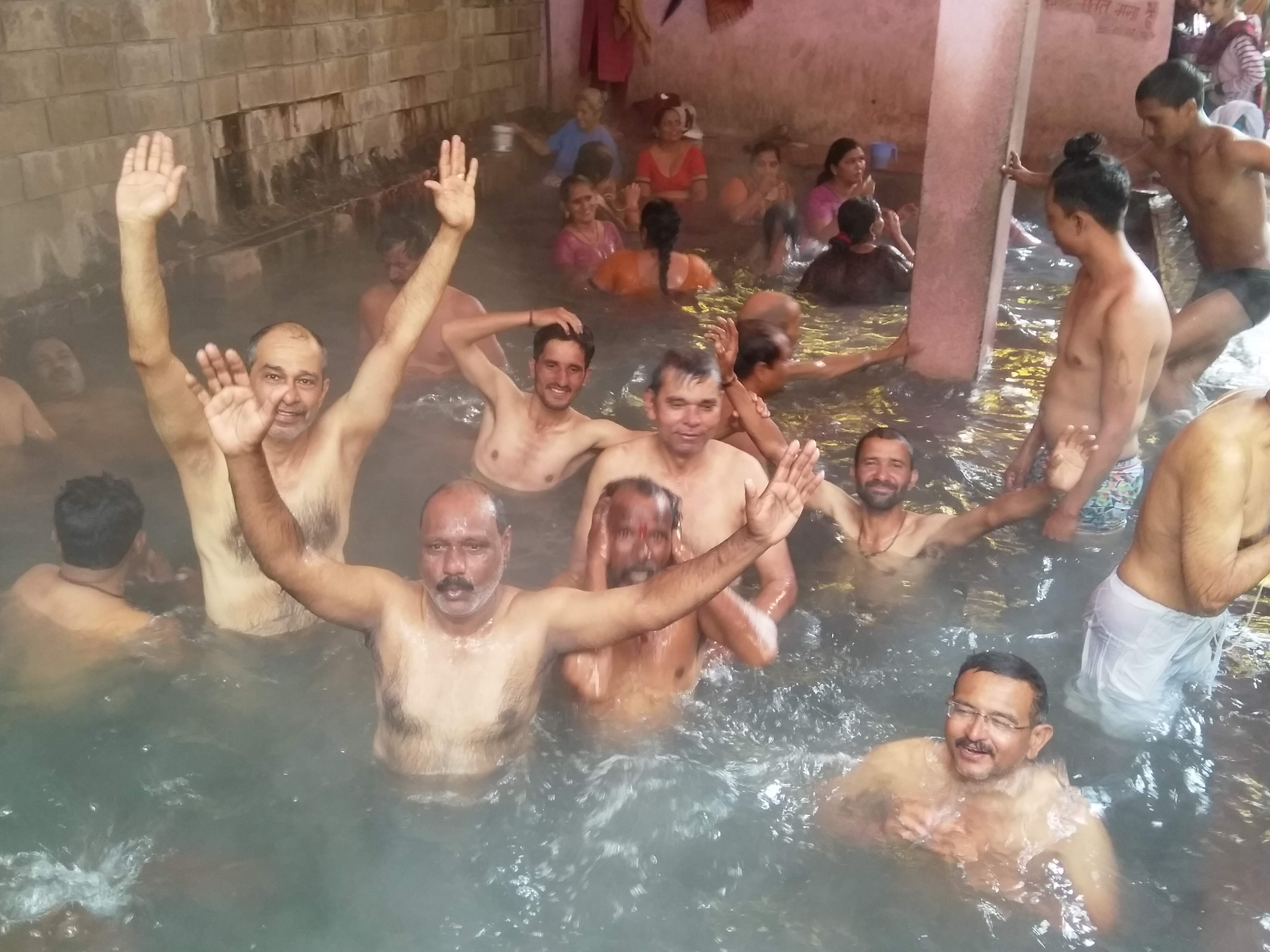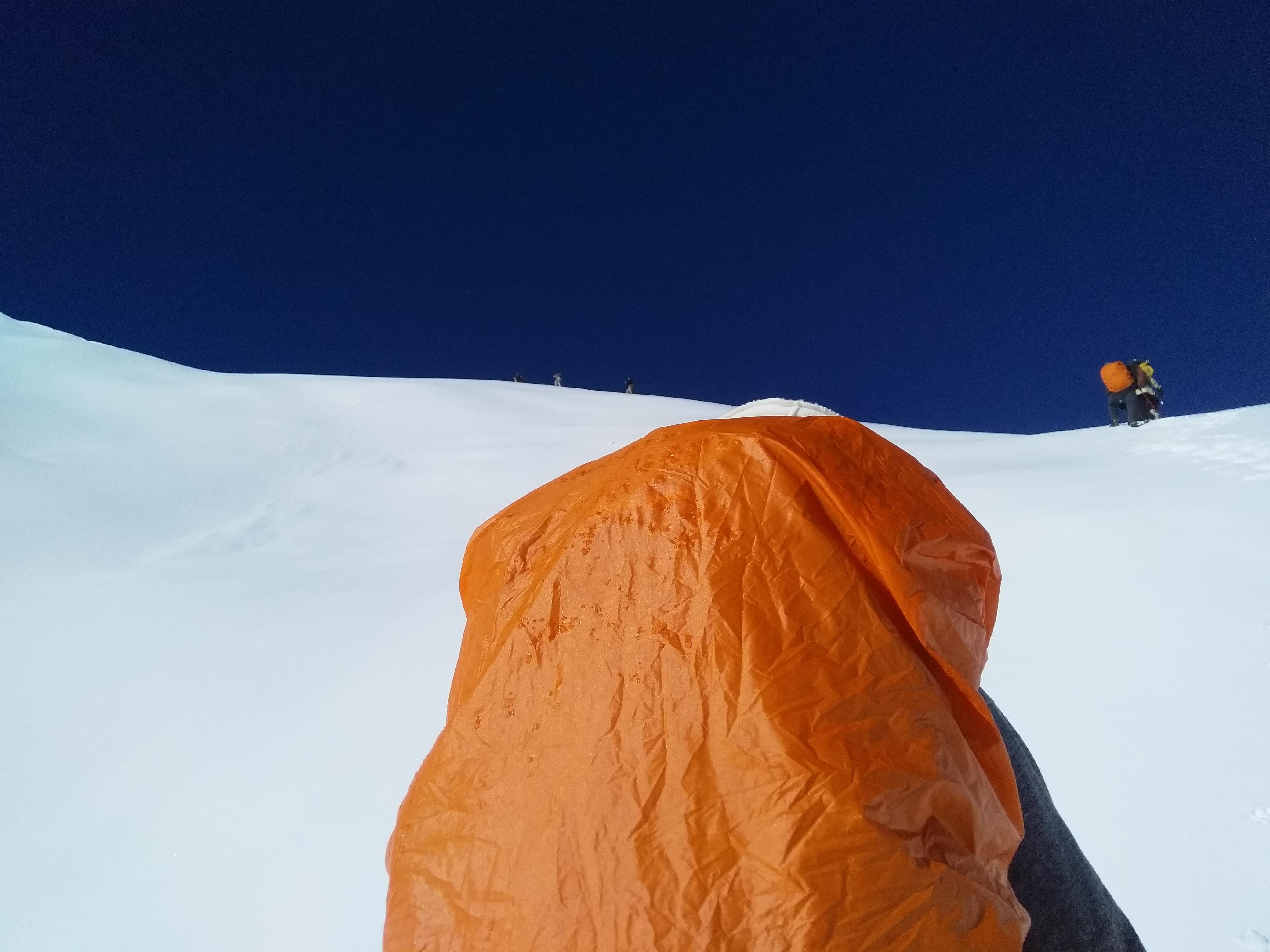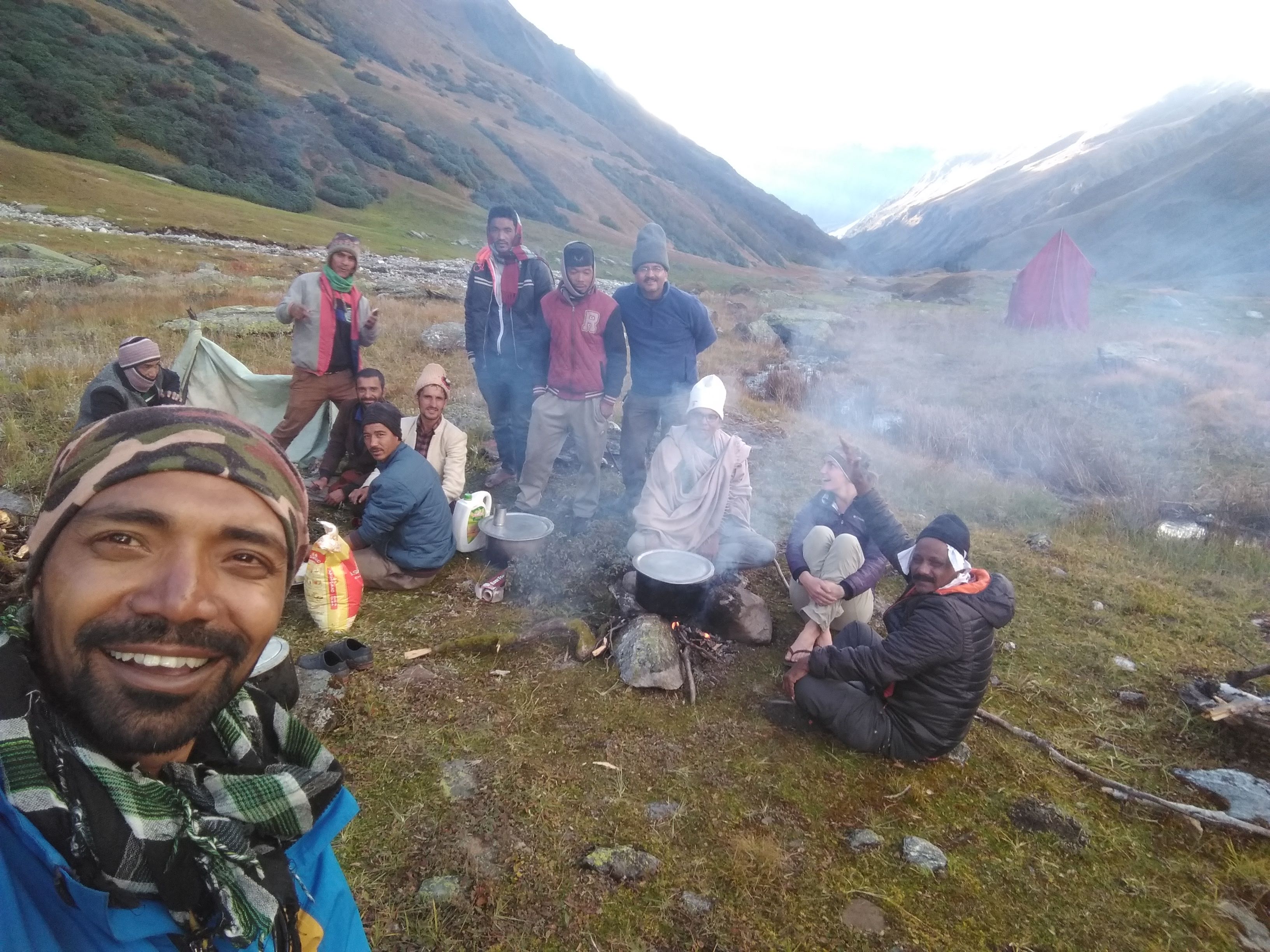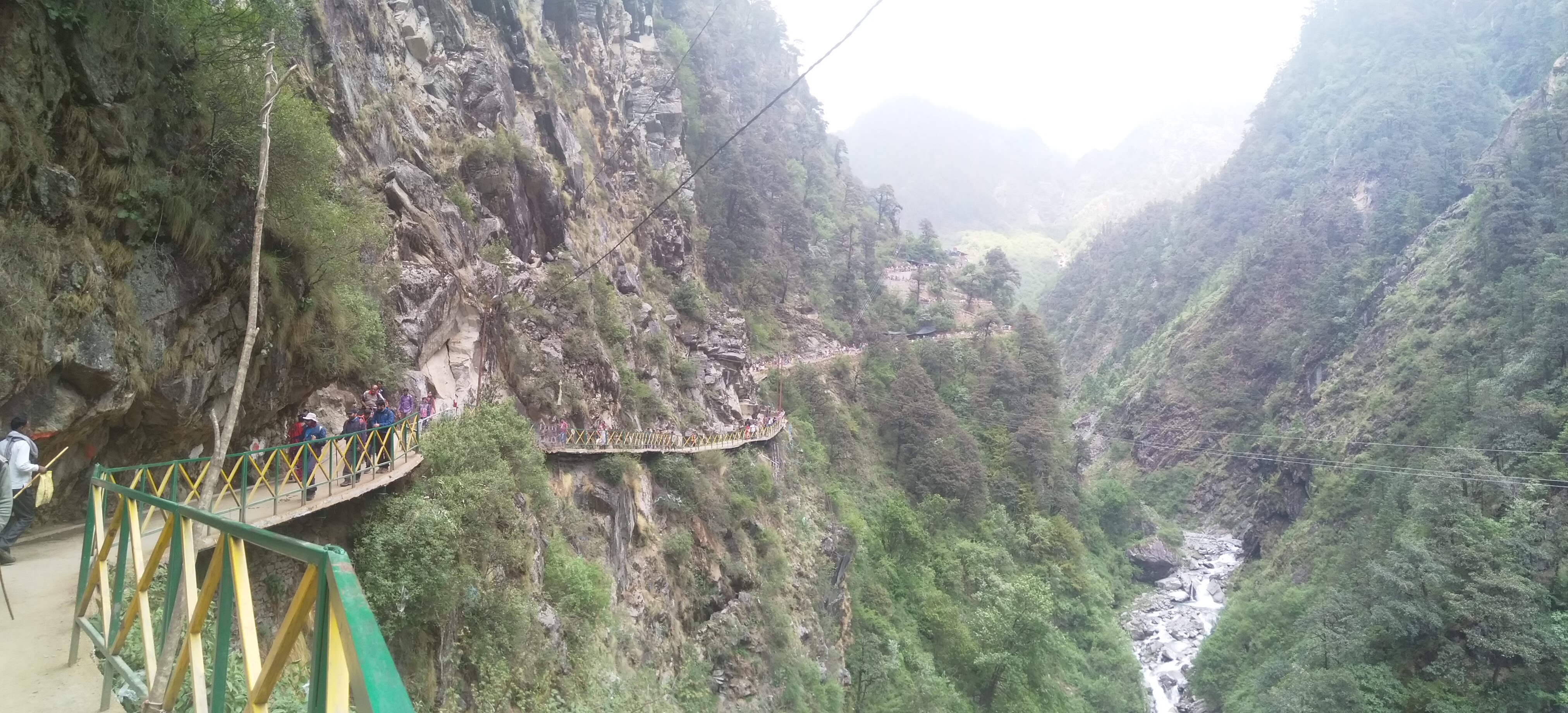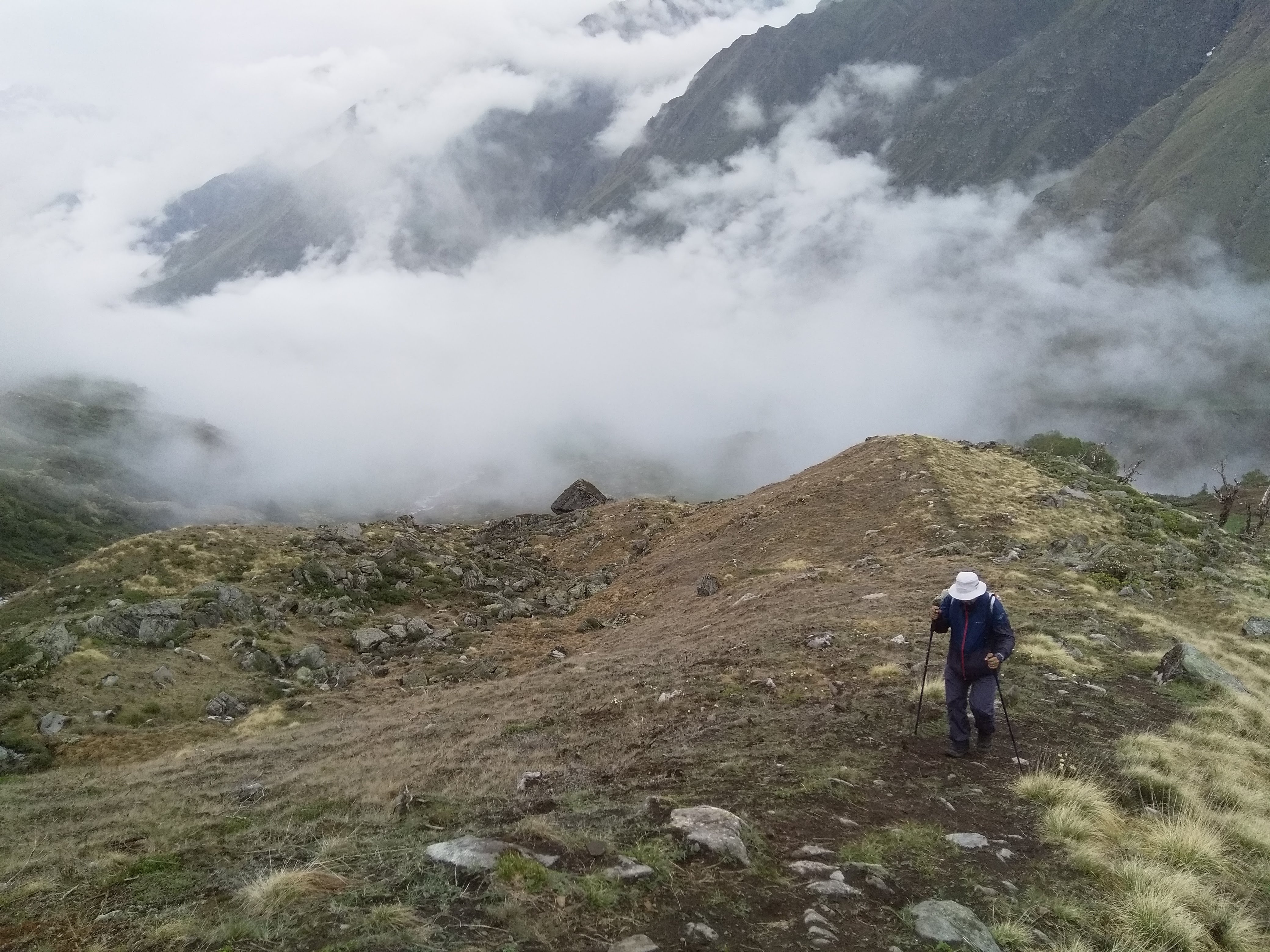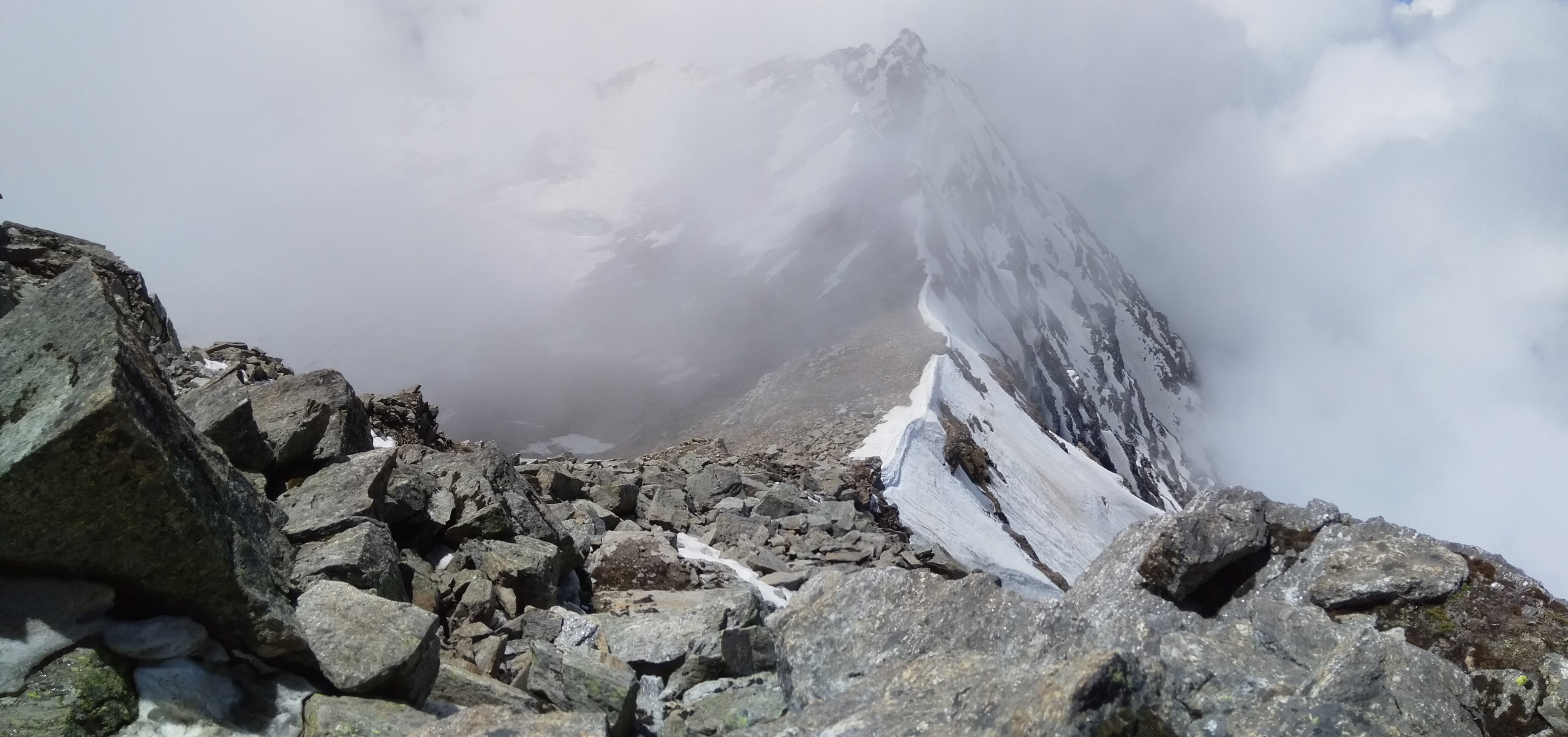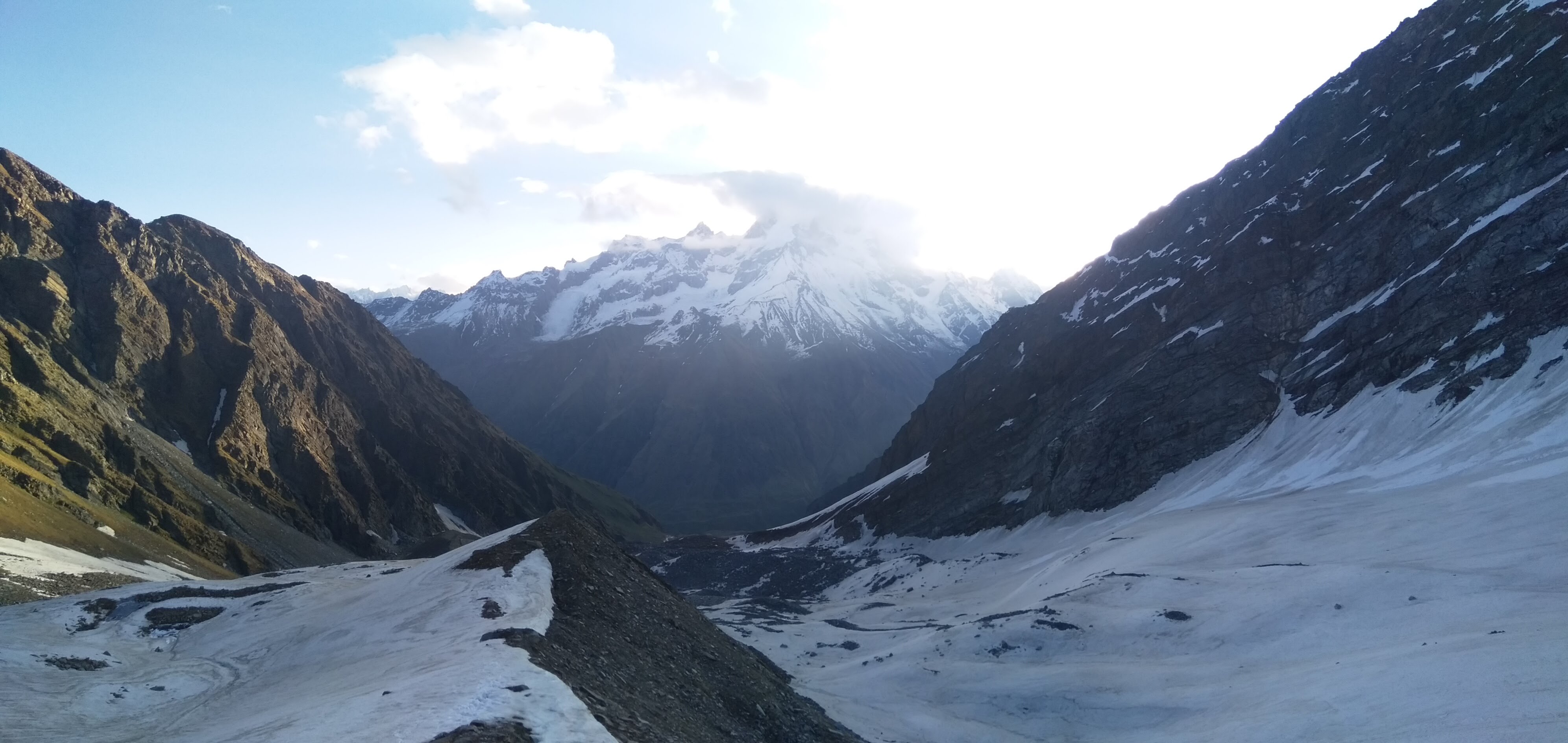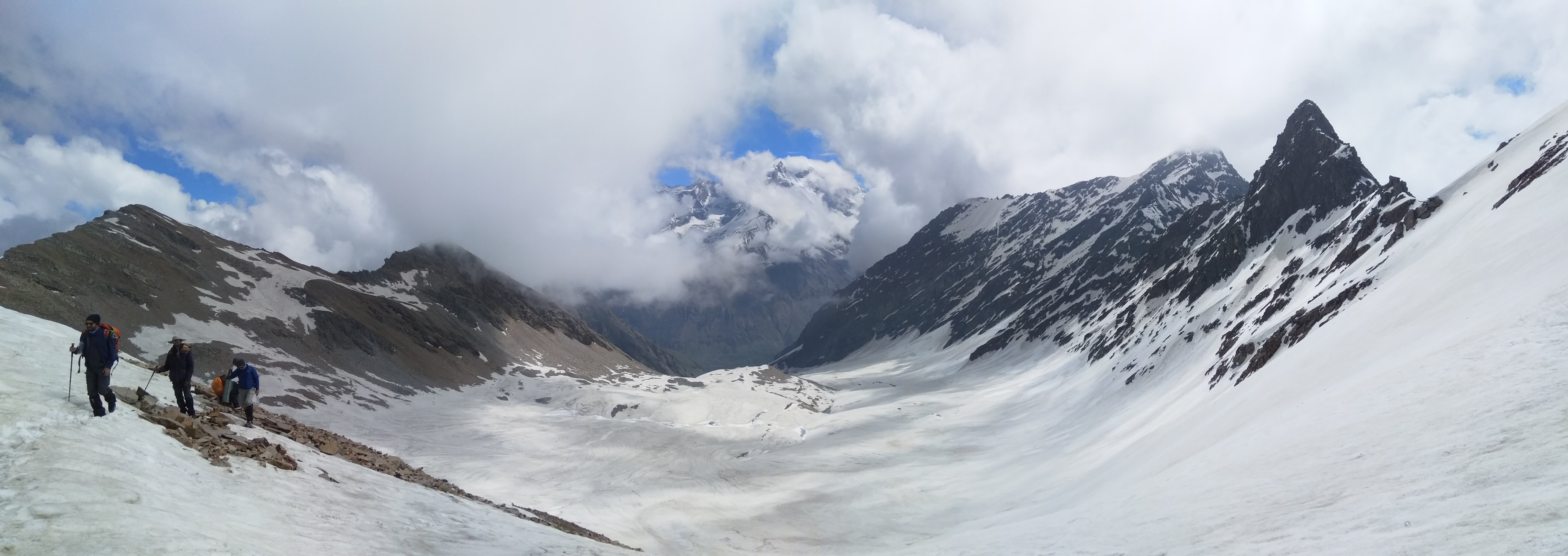📅 Day 1: Arrive in Sankri (6,400 ft)
• Drive distance: ~195 km | Duration: 6–8 hours.
• Drive from Dehradun to Sankri through Mussoorie, Purola, and Mori — one of the most scenic drives in the Garhwal Himalayas.
• The route winds through pine and deodar forests, with glimpses of the Tons River below.
• Sankri, a quaint village in Govind Pashu Vihar National Park, serves as the base for several famous treks.
• Overnight stay in a guesthouse or homestay at Sankri.
📅 Day 2: Sankri to Dhatmeer (7,875 ft) – Trek to Seema (8,400 ft)
• Drive distance: 18 km | Trek distance: ~8 km | Duration: 1.5 hrs drive + 5–6 hrs trek.
• Short morning drive from Sankri to Dhatmeer village, the trek’s starting point.
• Trail begins with a gentle walk along the Supin River through chestnut, walnut, and deodar forests.
• Cross charming wooden bridges, cascading waterfalls, and small villages like Gangaar.
• The route offers first views of snow peaks of the Swargarohini range.
• Camp at Seema by the river, surrounded by thick forest and open meadows.
📅 Day 3: Seema (8,400 ft) to Devsu Thatch (10,200 ft)
• Trek distance: ~6 km | Duration: 4–5 hours.
• Follow the Supin River upstream, crossing mixed forest trails of oak, pine, and silver birch.
• The climb gradually opens into lush alpine meadows of Devsu Thatch — one of the most beautiful campsites on this trail.
• From here, you get sweeping views of Kala Nag (Black Peak, 20,955 ft) and Bandarpunch ranges.
• The trail is mildly steep but scenic throughout, with birds and rhododendrons in bloom (April–June).
• Camp overnight in tents at Devsu Thatch, surrounded by vast green meadows and icy peaks.
📅 Day 4: Devsu Thatch (10,200 ft) to Ruinsara Tal (11,700 ft)
• Trek distance: ~8.5 km | Duration: 5–6 hours.
• A moderate day following the Supin River for the last time before reaching Ruinsara Lake.
• Trail passes through silver birch and rhododendron forests, then opens into vast alpine terrain dotted with boulders and streams.
• Ruinsara Tal is a glacial lake surrounded by grassy meadows and towering peaks like Swargarohini and Dhumdhar Kandi.
• The area is known for Himalayan blue poppies and primulas during summer bloom.
• Overnight stay in wooden huts or tents beside the lake.
📅 Day 5: Ruinsara Tal (11,700 ft) to Odari (13,150 ft)
• Trek distance: ~4 km | Duration: 3 hours.
• Short but scenic day through boulder sections and gentle river crossings.
• Odari means 'rock cave' — believed to be the place where Bali (Hanuman’s brother) once stayed, giving the trek its name.
• The trail gradually gains altitude and offers stunning views of Swargarohini I & II.
• Camp beside the river at Odari, surrounded by rocky ridges and high mountains.
• Evening briefing and acclimatization walk to prepare for the higher camp.
📅 Day 6: Odari (13,150 ft) to Bali Base Camp (15,350 ft)
• Trek distance: ~3.5 km | Duration: 3–4 hours.
• Short but steep ascent over rocky and moraine terrain.
• The trail climbs through loose scree slopes with panoramic views of the Ruinsara Valley below.
• Campsite at Bali Base Camp offers mesmerizing sunset views and close-up look at glaciated peaks.
• Night temperatures drop below freezing; stay hydrated and warm.
• Overnight stay in tents at Bali Base Camp.
📅 Day 7: Bali Base Camp (15,350 ft) to Lower Dhamni (11,200 ft) via Bali Pass (16,207 ft)
• Trek distance: ~10 km | Duration: 8–10 hours.
• The toughest and most spectacular day of the trek.
• Early start around 5 AM for the pass crossing — the trail is snow-covered and steep in early season.
• After a demanding climb, reach Bali Pass (16,207 ft), offering 360° views of Swargarohini, Banderpunch, and Garhwal ranges, with the Yamunotri valley far below.
• The descent from the pass is steep and scree-filled — use microspikes or gaiters if snow remains.
• Cross the narrow 'goat trail' section with caution.
• Reach Upper Dhamni for rest, then continue to Lower Dhamni campsite through mixed forest.
• Overnight stay in tents.
📅 Day 8: Lower Dhamni (11,200 ft) to Yamunotri (10,800 ft) – Drive to Dehradun
• Trek distance: ~9.5 km | Duration: 5–6 hours.
• Descend through dense oak and rhododendron forest until the trail merges with the cemented pilgrim path to Yamunotri.
• Take a dip in the sacred hot springs — perfect for soothing tired muscles.
• Visit the Yamunotri temple, one of the Char Dham shrines.
• Continue trekking to Janki Chatti (base of Yamunotri), where vehicles to Dehradun will be waiting.
• Trek ends with memories of one of Garhwal’s most rewarding high-altitude crossings.
• You can plan onward travel the same day or explore Dehradun city.
